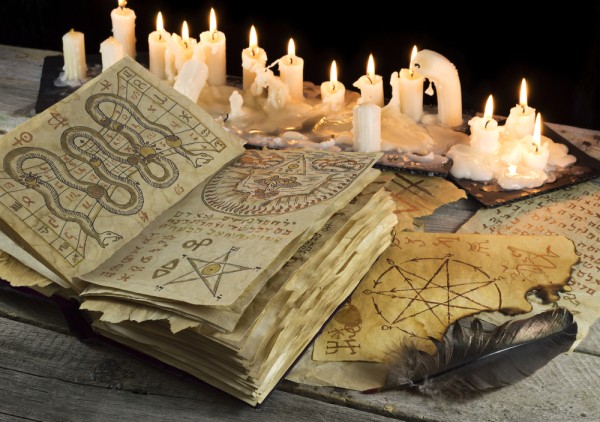Originally Published March 15, 2016
Paganism, Voodoo, and the spirituality of Native Americans are put in the same category in this part of the series not to generalize them as completely the same, but because so much of the cause and effect within the mysticisms are the same, and unite under the same method of spirituality: witchcraft.
Witchcraft, from the anthropological definition, is a spiritual belief in the presence of Nature itself, very generally speaking. Witchcraft was developed as peasant religions during times of cultural and philosophical discrimination, and because of this, witches developed an intimate and observation-based connection between themselves, the world around them, and the metaphysical world of “spirits” that connected them. Witchcraft in the West had been around long before the Catholic church, and because of this, it was considered one of its primary targets–as well, because of the Church’s detest for Witchcraft, it is one of the first times in recorded history that the ideology becomes more of a recorded social philosophy. Up until that point, Witchcraft (Paganism, in this case) had been more of a collection of ideas that different people pursued in very different ways, for very different reasons. There was never any set gods or goddesses and witchcraft perceived the god of individual worship to be dependent on the individual–because it was meant to be a reflection of the individual’s higher self, something akin to Plato’s “ideal forms.”
Spirits were seen in everything everywhere, because they were the divinity in all things–and the capacity for all things to be engaged with (magick). Those who practice Witchcraft and Voodoo alike, considered the ability of magick to be an engagement between their spirit and the spirit within the object. In consideration of “magick,” it is an endlessly convoluted term, and has as many broad applications as the term “science.” Magick from a historical point of view involves knowledge of plant medicines and poisons for “potions,” an understanding of occult knowledge/symbolism to any varying degree, a manipulative charisma that could practically “charm” people, and understandings of psychology and things like hypnotism. Beyond that, there is plenty of argument for extra-sensory perceptions as well, like clairvoyance, precognition, astral travel, telepathy, and communion with metaphysical entities to a varying physical degree–but for brevity, it will be left at that.
Voodoo, which was born out of the juxtaposed African culture in slave society, can be seen as a conjugation of orthodox Catholicism and African tribal shamanism, by using the Christian explanations of angels and demons, et cetera, to map out their shamanistic traditions. In an attempt to generalize here, both African and Native American (including Mesoamerican) mysticism can be seen under the same context as the origins of pagan witchcraft (although it is undeniable that there was a trickle effect of the Mystery Initiations and their esoteric knowledge into peasant-oriented witchcraft– see Part VI for more details). Witchcraft, being the anthropological definitions of the mysticism of the Pagans, the Voodoo, and the Native Americans, is characterized as a peasant religion, based on the observation of nature, and the integration of its patterns into human life on a personal and social level. This is enacted by a variety of symbolism and ritual that is predominantly associated with shamanism. However, it cannot be denied that all forms of witchcraft can and were used for nefarious activities, as black sabbaths and black magick have been a recurring theme throughout all of human mysticism. To the adepts of witchcraft, the fields of study also involved various modes of alchemy, astrology, and numerology, depending on cultural context of these ideas.
[accordion title=”Beginners Guide to Metaphysics – Continued” close=”0″]Part 1: Introduction
Part 2: Eastern Mysticism: Buddhism, Taoism and Hinduism
Part 3: Witchcraft: Paganism, Voodoo and Native American Mysticism
Part 4: Abrahamic Mysticism: Catholicism, Kabbalah and Islam
Part 5: Gnosticism
Part 6: The Mystery Initiations of Greece and Egypt
Part 7: Secret Societies: Freemasonry, Illuminati and Bohemian Grove
Part 8: Science and Mysticism Unified[/accordion]
Sources: http://www.thewica.co.uk/Pentagram.htm, http://geraldgardner.com/History_of_Wicca_Revised.pdf, https://www.youtube.com/watch?v=2rNmTkKj0cc, https://www.youtube.com/watch?v=rRNkcsk81eU, http://www.africanholocaust.net/news_ah/vodoo.htm





One Reply to “Beginner’s Guide to Metaphysics – Part 3: Witchcraft – Paganism, Voodoo and Native American Mysticism”